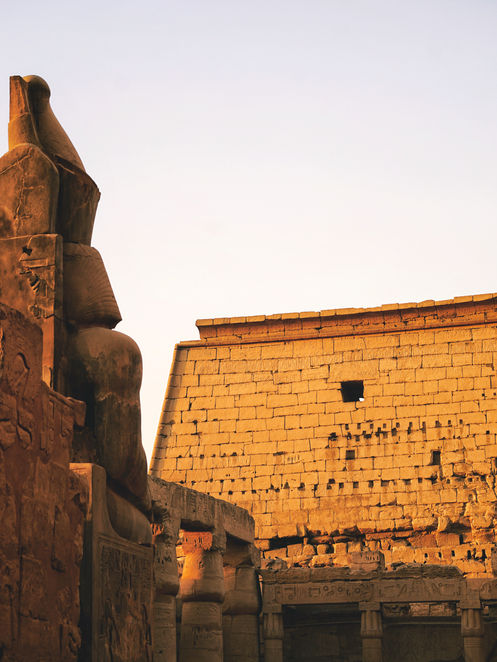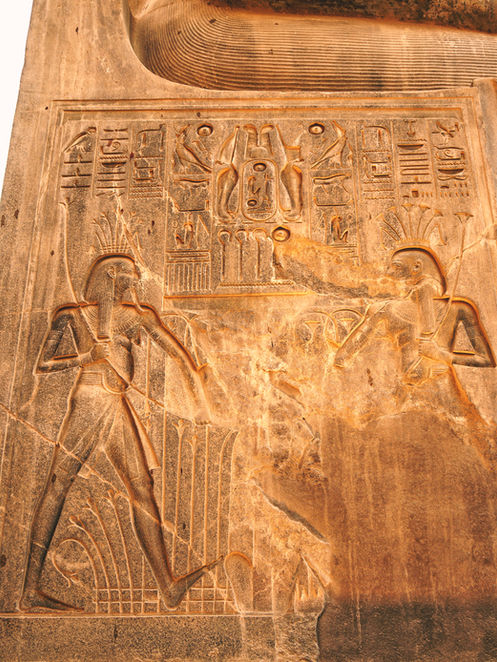
LUXOR TEMPLE
NEW KINGDOM
EIGHTEENTH DYNASTY
The Luxor Temple, standing on the east bank of the Nile in the great city of Thebes, stands as a four thousand year old testament to continual worship. Egyptians, Greeks, Romans, Christians and Muslim have all left their mark written in stone.
From the mighty Karnak Temple, there lies a processional avenue lined with hundreds of sphinxes, connecting the great temple to Luxor. Luxor Temple was established in 3,400 B.C. by Ahmenhotep III as a site where the pharaohs received divine authority and kingship. This pharaoh's divine birth is famously engraved on the walls within this complex, reminding all that this was not just an earthly ruler, but one who received direct authority from the gods. At the entrance stands a 75-foot high obelisk, with its twin carried away to Paris. The obelisk is guarded by massive statues of Ramesses II, a ruler who had an affinity towards making himself as large as possible. Each towering column and carved relief are not merely for decoration, they deliver the same thunderous proclamation: behold your god-kings, who built these temples as monuments to their own divinity.













































